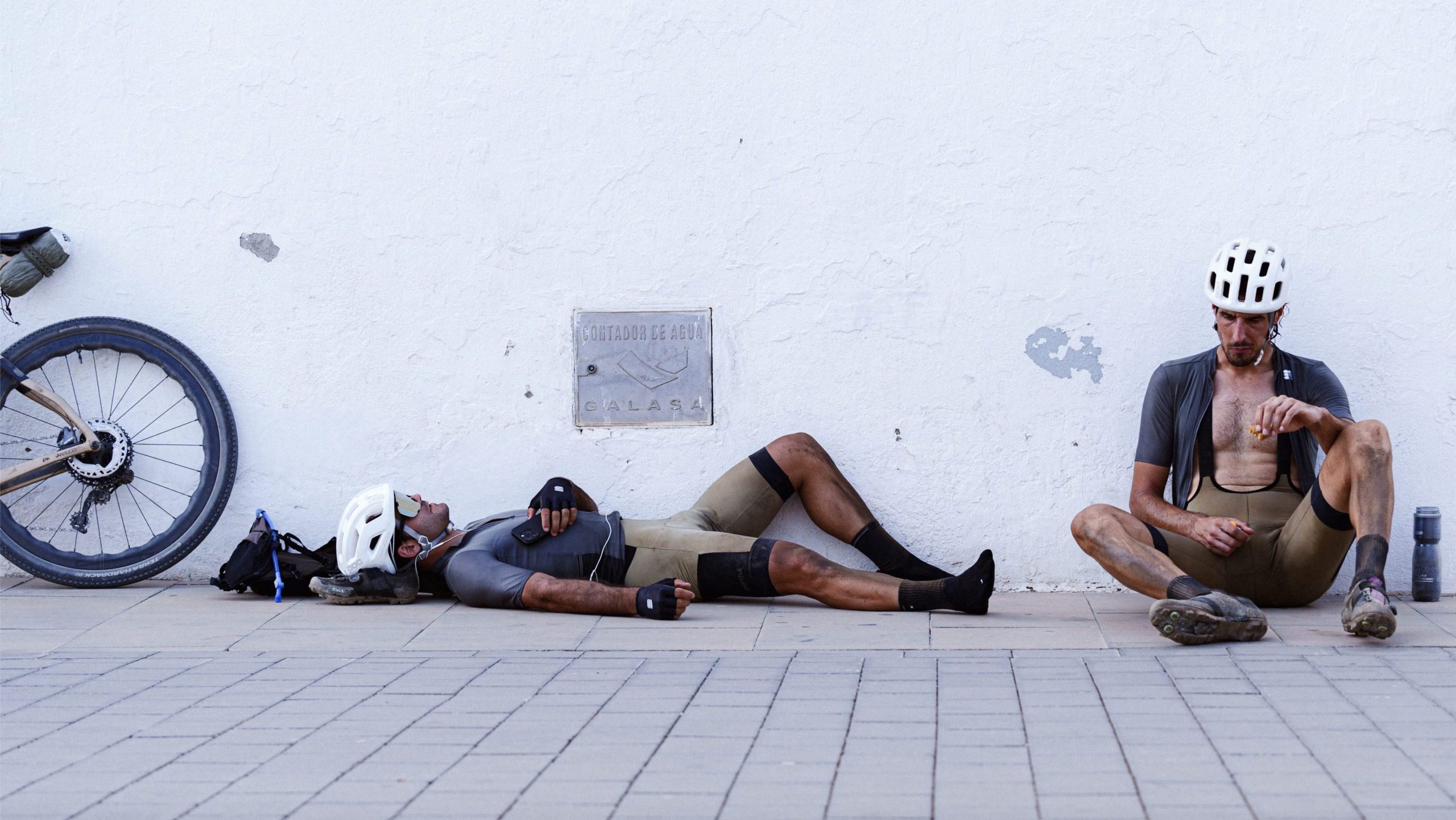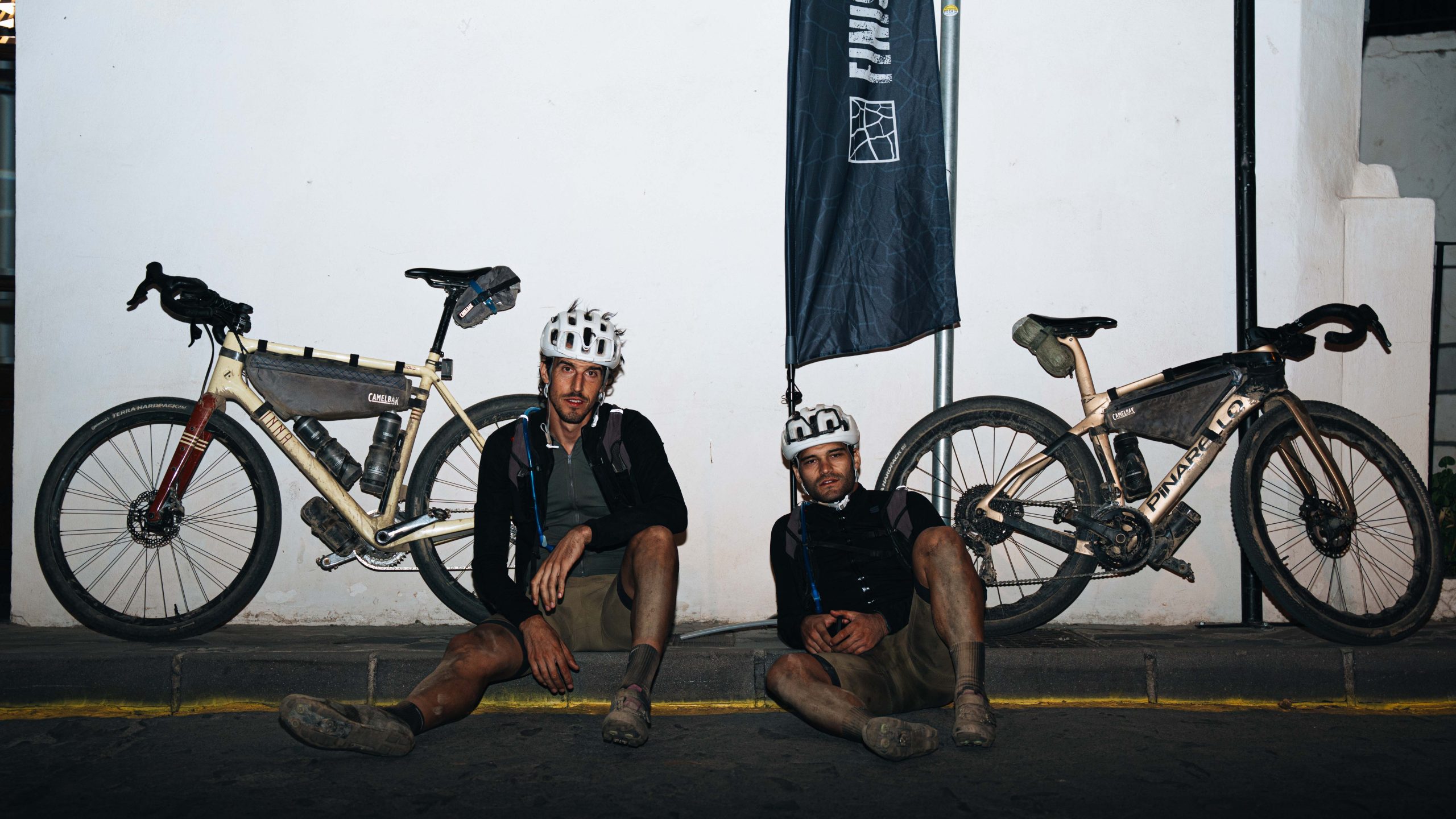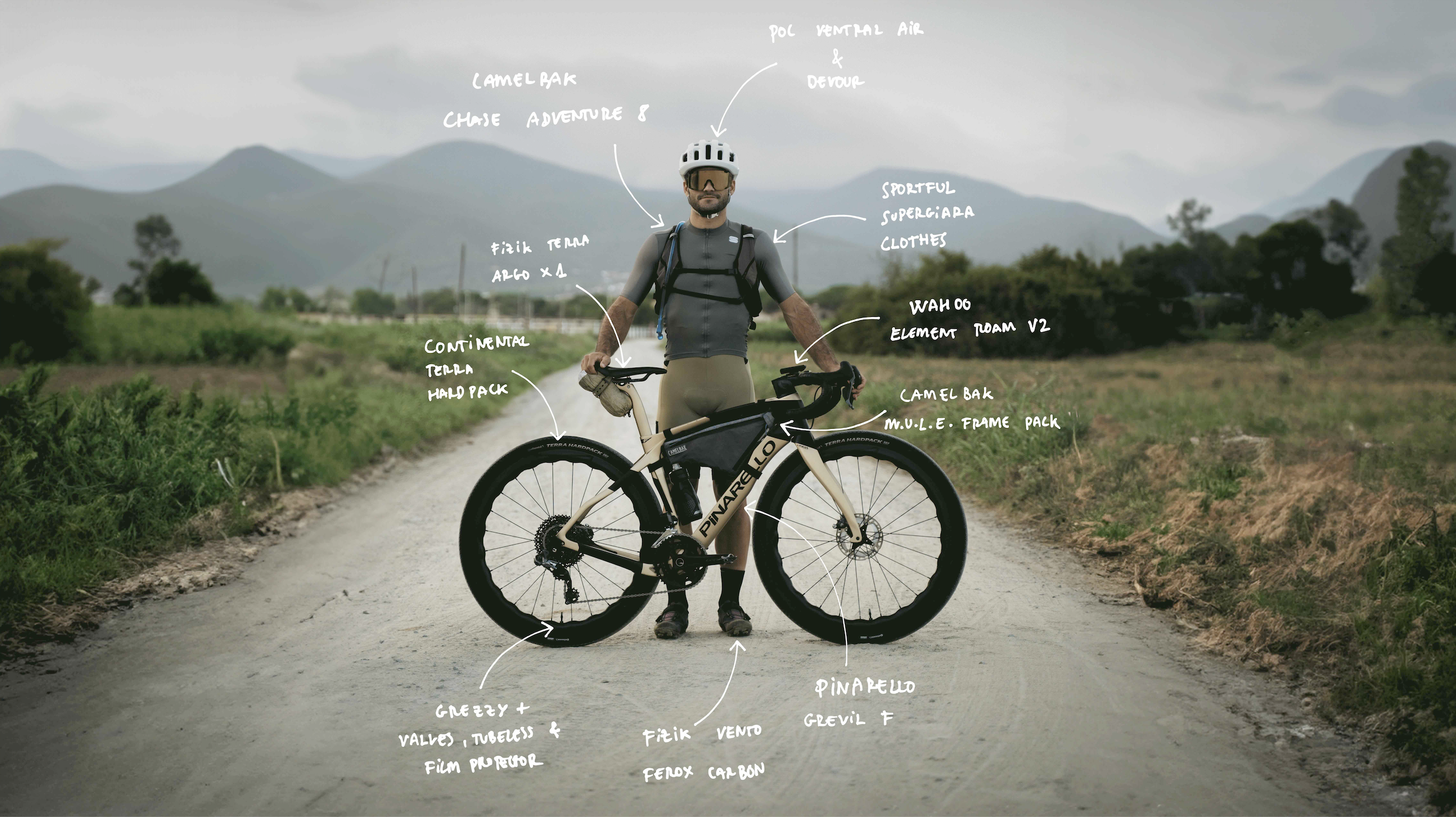
791km +16.893m
Ready for Round Two
This was our second time entering the Badlands race, and although we thought we knew what to expect, things turned out differently. Our plan was simple: ride as much as possible and sleep as little as possible. That’s exactly what we did.
We started from Granada full of energy, managing to cover 127km and +2,370m of elevation with just a brief stop to refill water. We were feeling great, and the pace was better than expected. But as soon as we hit the Gorafe Desert, everything shifted.
The Gorafe Desert Struggle
Our plan was to stop, refuel with food and water, and then ride the 70km loop around the desert. To our surprise, everything in the town where we stopped was closed. There was only a small fountain, and although we refilled our bottles, the heat was unbearable. Before we knew it, we were out of water again, with 30km left until the next town, Gor.
The heat was brutal, and we both felt the beginning of heat exhaustion. Dizzy, weak, and unable to pedal properly, it was one of the toughest parts of the race. But somehow, we found the strength to keep moving and finally reached Gor at 10:30 p.m. We had already covered 230km, with +4,790m of elevation in 14.5 hours.
Cold Nights in the Sierra
After a long break to eat and recover, we continued our journey, climbing into the Sierra de Baza. The cold hit us, but it was manageable. We pedaled through the night until around 6 a.m., when both Johnny and I were falling asleep while riding, so we decided to stop at km 299, with +5,980m of elevation and 22 hours into the race. Just before reaching the top of Calar Alto, we knew it was too dangerous to descend in our condition, so we took a short break, setting the alarm for just an hour of sleep.
Battling the Heat and Humidity
By 7:15 a.m., we were back on track. It was colder than the night before, but as we descended, the temperature quickly warmed up. After a quick stop for sandwiches and coffee at Velefique, we continued. The terrain became gentler, and the kilometers passed more easily as we approached the coast and we started to feel the heat and humidity again.
Our plan was to stop at El Sopalmo for food, but once again, everything was closed. We had to push on, passing through Llano de Don Antonio, and it wasn’t until Agua Amarga that we finally found an open supermarket. We bought bread, ham, cheese, and liquid yogurt to recharge. By then, it was 5 p.m., and the sun began to set as we entered the Cabo de Gata Natural Park.
Midnight Madness and Hallucinations
Tired and worn out, we stopped in Cabo de Gata town for a much-needed dinner. We ordered two pizzas each—one to eat there, and one to take with us for the night ahead. We knew there wouldn’t be any food available for another 80km, since we were riding through the night.
After dinner, we felt recharged and rode into the darkness with a fresh mindset. But arriving in Níjar wasn’t easy. The terrain was rough, slowing us down, and after that, the 19km climb to Colativí (1,387m) was brutal, with +1,040m of elevation through Sierra Alhamilla. It took us 3 hours at a snail’s pace of 6km/h. We were so tired we started hallucinating—it was one of the craziest experiences I’ve ever had.
Before the 15km descent to Tabernas, we stopped for a short 1h30m sleep. It wasn’t enough to fully recharge, but it gave our brains a small reset.
The Final Push
By now, everything hurt. Every position on the bike was uncomfortable, and we just wanted to finish. We pushed through with quick stops for water and food, only taking brief breaks at Santa Fe de Mondújar and Alboloduy. But the heat in Tabernas Desert drained us again, and we had to stop at Ragol, km 661 +11.080m, to rest and eat before climbing Sierra de Gádor.
After the break, we slowed down significantly, and Johnny needed to stop again. The heat had taken its toll. We found another restaurant 20km later to recharge once more. But even then, we didn’t feel fully refreshed. We were completely exhausted, running on survival mode.
The Last 77km: A True Test
With “only” 77km and +2,570m of elevation left, we had no idea that this would be the toughest part of the race. I thought it would take 2-3 hours to reach Capileira, but when I realized it would be more like 8-9 hours, my motivation dropped. The idea of riding for that long was a nightmare.
After some time feeling defeated, I had a moment of clarity. I turned to Johnny and said, “We’re finishing today, no matter what. We’re getting a shower and sleeping in a bed tonight”. That shift in mindset gave me the energy I didn’t know I had. I convinced Johnny that we could do this.
From that moment on, we pushed through, setting small goals—each climb, each intersection became a tiny victory. We finally made it to Trevélez, smelling the hams as we entered the town. We were only 20km from the finish line, and we could taste the victory.
Crossing the Finish Line
Wednesday, September 4th, 4:03 a.m.—68 hours since we had left Granada. We crossed the finish line in Capileira. There was no crowd, no applause, just silence. Only Alex was there, filming our arrival.
For me, it was a moment of realization. I couldn’t finish last year, but this time, I did it. We did it. After all the suffering and effort, I completed what we had set out to do months ago. It was closure. We did this not for anyone else, but for ourselves, to conquer the immense challenge we had set. And we did.

WATCH THE VIDEO HERE
BADLANDS 2024: OUR PLAN
Even though Badlands is an unsupported ultracycling race, we prepared a small piece of paper, laminated to withstand all weather conditions, which we always carried with us.
From left to right, the first three columns indicated whether we would find a fountain, restaurant, or supermarket in each town. The fifth column showed the total kilometers covered in the race. The sixth and seventh columns (+km and +m) displayed the distance and elevation remaining to the next stop. The last three columns provided estimated arrival times based on three average speeds: 12km/h, 15km/h, and 17km/h. This allowed us to track our performance and estimate when we would reach towns to refuel with food and water.
We also marked our ideal stops in orange, which we had planned in advance. With this sheet in our pocket, it was easier to make decisions on the go without having to stop frequently to check.

This is the stop chart from the pairs category, as you can see, everyone choses a different stop strategy

OUR BIKES SET UP

Having learned from the previous edition, we changed three key things to set ourselves up for success:
Drivetrain: We realised we needed easier gearing for the long, steep climbs. Last year, we had a single 38T chainring with a 46-11 cassette, which caused us to waste a lot of energy while climbing. This year, we switched to a double chainring (30-46) while keeping the same cassette.
Bags: In 2023, our bikes were super heavy, and we carried a lot of stuff we didn’t use. So this time, we left unnecessary gear at home, making our bikes much lighter—mine weighed 13kg, and Johnny’s 15kg, which was a big improvement over last year. Camelbak geared us up with their bags, this is what we used:


Backpack: Chase™ Race 4 Hydration Vest with Crux® 1.5L Reservoir as a backpacks
Saddle pack: M.U.L.E.® 1
Frame bag: M.U.L.E.® Frame Pack Large for Johnny, Small for me
Bottles: Podium® Chill™ 21oz Bike Bottle for Johnny’s bike & Podium® 21oz Bike Bottle for my bike
by

Tyres & Tubeless: We opted for a Continental Terra Hardpack 50c wide tyres with a smooth central tread, perfect for smoother surfaces. For the Tubeless we used the Grezzy+ Tubeless Rim Tape + Sealant Tubeless MTB Formula + Mousse Black Valves. We also equipped them with Tannus Tubeless Lite inserts to avoid any irreparable tyre and rim damage.
Bike Protection: Protecting your bike before any big adventure is essential, especially when using bags, as the frame often gets scratched. We used Grezzy+ film protector on key areas of our frames to prevent any damage.
production: ApperStudio | riders: Pol Tarrés & Johnny Anaya | special thanks: POC, Sportful, Camelbak, Grezzy+, Pinarello, Magicshine, Continental & Fizik | photo: Alexandre G






















































